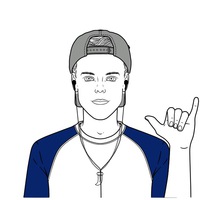
Какой режим сложился в СССР к концу 1930 годов 20 века, в чём состояли его основные черты. Можно ли
его назвать тоталитарным? 0
0
 0
0
Ответы на вопрос
 Внимание! Ответы на вопросы дают живые люди. Они могут содержать ошибочную информацию, заблуждения, а также ответы могут быть сгенерированы нейросетями. Будьте внимательны. Если вы уверены, что ответ неверный, нажмите кнопку "Пожаловаться" под ответом.
Внимание! Ответы на вопросы дают живые люди. Они могут содержать ошибочную информацию, заблуждения, а также ответы могут быть сгенерированы нейросетями. Будьте внимательны. Если вы уверены, что ответ неверный, нажмите кнопку "Пожаловаться" под ответом.

 0
0
 0
0

The Regime in the USSR by the Late 1930s
By the late 1930s, the Soviet Union was under the rule of Joseph Stalin, and a totalitarian regime had firmly taken hold. The regime was characterized by several key features:
1. One-Party Rule: The Communist Party, led by Stalin, held absolute power in the Soviet Union. Other political parties were banned, and dissenting voices were suppressed.
2. Centralized Control: The regime exercised strict control over all aspects of society, including the economy, media, education, and culture. The state controlled industries, agriculture, and resources, implementing centralized planning and collectivization policies.
3. Cult of Personality: Stalin's cult of personality was pervasive, with his image and ideology promoted extensively through propaganda. He was portrayed as a strong and infallible leader, and any criticism or dissent against him was met with severe consequences.
4. Secret Police and Surveillance: The regime maintained a vast network of secret police, such as the NKVD, to suppress opposition and maintain control. Surveillance and censorship were widespread, and citizens were encouraged to report on each other.
5. Purges and Repression: The late 1930s saw a period of intense purges and repression, known as the Great Purge or the Great Terror. Stalin targeted perceived enemies within the party, military, and society at large, resulting in mass arrests, show trials, and executions.
6. Command Economy: The Soviet Union operated under a command economy, with the state controlling production, distribution, and pricing. Five-Year Plans were implemented to rapidly industrialize the country, often at the expense of human welfare and individual freedoms.
7. Propaganda and Indoctrination: The regime used propaganda extensively to shape public opinion and maintain control. Education and media were used to indoctrinate citizens with communist ideology and loyalty to the state.
Totalitarian Nature of the Regime
The regime that had developed in the USSR by the late 1930s can indeed be described as totalitarian. Totalitarianism refers to a system of government that seeks to control all aspects of public and private life, leaving no room for individual freedoms or dissent. The Soviet regime under Stalin exhibited many characteristics of totalitarianism, including:
1. Centralized Power: The regime had centralized power in the hands of the Communist Party and its leader, Joseph Stalin. All major decisions were made by the party leadership, and there was no separation of powers or checks and balances.
2. State Control: The state exercised control over all aspects of society, including the economy, media, education, and culture. The regime aimed to shape and control the thoughts, beliefs, and behaviors of its citizens.
3. Suppression of Opposition: The regime suppressed any form of opposition or dissent, using tactics such as censorship, surveillance, and repression. Political opponents, perceived enemies, and even ordinary citizens were targeted and punished.
4. Propaganda and Indoctrination: The regime used propaganda extensively to shape public opinion and promote its ideology. Education and media were used to indoctrinate citizens with communist principles and loyalty to the state.
5. Cult of Personality: Stalin's cult of personality was a key aspect of the regime. He was portrayed as an infallible leader, and his image and ideology were promoted extensively through propaganda.
6. Mass Surveillance: The regime maintained a vast network of secret police and informants to monitor and control the population. Citizens were encouraged to report on each other, fostering an atmosphere of fear and mistrust.
7. Purges and Repression: The Great Purge of the late 1930s exemplified the regime's use of violence and repression to eliminate perceived threats and maintain control. Mass arrests, show trials, and executions were carried out to instill fear and obedience.
In conclusion, by the late 1930s, the Soviet Union was under a totalitarian regime characterized by one-party rule, centralized control, a cult of personality, secret police, purges, and a command economy. The regime exhibited many characteristics of totalitarianism, with the state seeking to control all aspects of public and private life.
 0
0
 0
0
Топ вопросов за вчера в категории История
Последние заданные вопросы в категории История
-
Математика
-
Литература
-
Алгебра
-
Русский язык
-
Геометрия
-
Английский язык
-
Химия
-
Физика
-
Биология
-
Другие предметы
-
История
-
Обществознание
-
Окружающий мир
-
География
-
Українська мова
-
Информатика
-
Українська література
-
Қазақ тiлi
-
Экономика
-
Музыка
-
Право
-
Беларуская мова
-
Французский язык
-
Немецкий язык
-
МХК
-
ОБЖ
-
Психология
-
Физкультура и спорт
-
Астрономия
-
Кыргыз тили
-
Оʻzbek tili



















